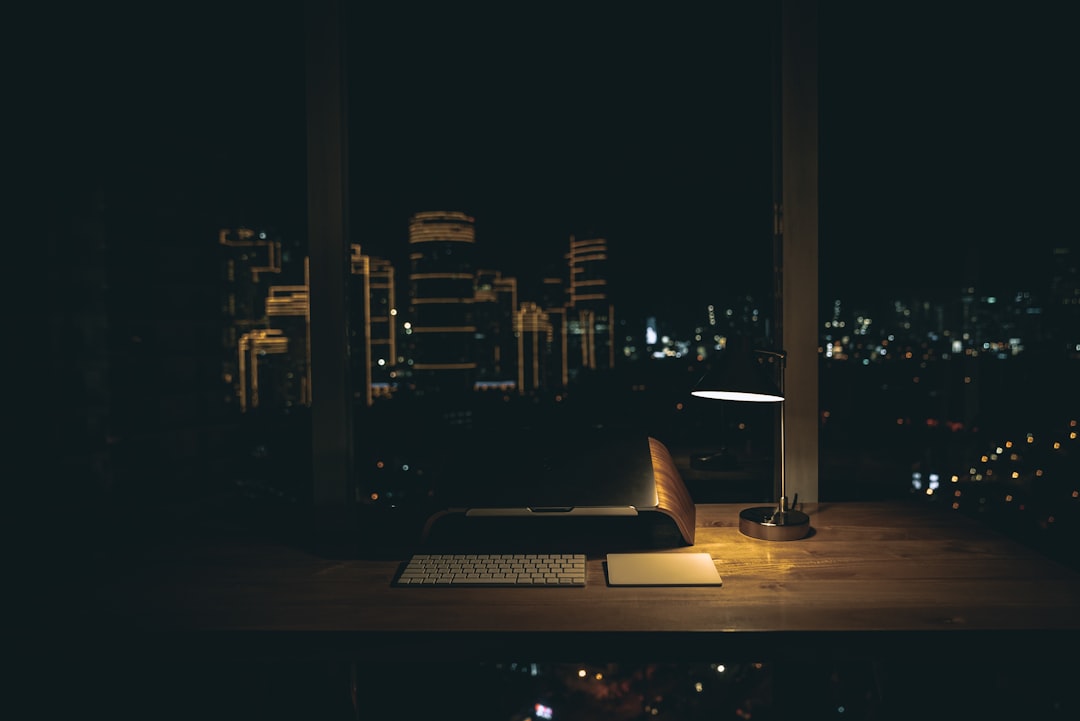Introduction: The Importance of Interior Design in Transforming Spaces
Interior design plays a crucial role in our daily lives, whether we realize it or not. It has the power to transform a space and greatly impact our well-being. From the colors on the walls to the furniture we choose, every element of interior design contributes to creating a space that is functional, aesthetically pleasing, and reflective of our personal style.
The impact of interior design goes beyond just making a space look good. It can greatly improve our well-being by creating an environment that is comfortable, inviting, and conducive to our needs. A well-designed space can enhance productivity, promote relaxation, and even improve our mood. It has the ability to create a sense of harmony and balance, making us feel more at ease in our surroundings.
Understanding the Basics of Interior Design: Color, Lighting, and Space Planning
Color is one of the most important aspects of interior design. It has the power to evoke emotions and set the mood of a space. Warm colors like reds and yellows can create a cozy and inviting atmosphere, while cool colors like blues and greens can promote calmness and relaxation. The choice of color can greatly impact how we feel in a space, so it is important to choose wisely.
Lighting is another crucial element in interior design. It can greatly affect the mood and ambiance of a space. Natural light is always preferred as it creates a sense of openness and brings warmth into a room. However, artificial lighting also plays a significant role in creating the right atmosphere. Different types of lighting, such as task lighting, ambient lighting, and accent lighting, should be used strategically to create a well-lit and visually appealing space.
Space planning is the process of arranging furniture and other elements in a space to create a functional and aesthetically pleasing layout. It involves considering the flow of movement within a room, as well as the placement of furniture and other objects. Proper space planning ensures that a space is not only visually appealing but also practical and efficient. It allows for easy navigation and ensures that all the necessary functions of a space are met.
Choosing the Right Furniture: Style, Comfort, and Functionality
Choosing the right furniture is essential in creating a well-designed space. It should not only fit the style of the room but also be comfortable and functional. The style of furniture should complement the overall design aesthetic of the space. Whether it is modern, traditional, or eclectic, the furniture should blend seamlessly with the rest of the elements in the room.
Comfort should be a priority when choosing furniture. After all, a well-designed space should be comfortable to live in. Whether it is a cozy sofa or a supportive office chair, comfort should not be compromised. It is important to test out furniture before making a purchase to ensure that it meets your comfort needs.
Functionality is another important consideration when choosing furniture. Each piece should serve a purpose and contribute to the overall functionality of the space. For example, storage solutions such as bookshelves or cabinets can help keep a room organized and clutter-free. Multi-functional furniture, such as a sofa bed or an ottoman with storage, can also be a great addition to small spaces.
Adding Personality to Your Space: Art, Accessories, and Textiles
Adding personal touches to a space is what truly makes it feel like home. Art, accessories, and textiles are great ways to add personality and warmth to a space. Artwork can be used as a focal point or as a way to tie together different elements in a room. It can reflect your personal taste and interests, adding depth and character to your space.
Accessories such as vases, candles, and decorative objects can also add personality to a space. They can be used to create visual interest and add pops of color or texture. Textiles, such as rugs, curtains, and throw pillows, can also play a significant role in adding warmth and coziness to a space. They can be used to introduce different patterns, colors, and textures, creating a layered and visually appealing design.
Creating a Cohesive Design: Balancing Different Elements and Styles
Creating a cohesive design is all about finding the right balance between different elements and styles. It involves blending different colors, textures, patterns, and materials to create a harmonious and visually pleasing space. The key is to create a sense of unity and flow throughout the room.
One way to achieve a cohesive design is by choosing a color palette and sticking to it. This will ensure that all the elements in the room are visually connected. Another way is by using repetition. Repeating certain elements, such as a particular pattern or material, can create a sense of continuity and cohesiveness.
Mixing different styles can also create an interesting and unique design. However, it is important to find a common thread that ties everything together. This can be done through color, texture, or even shape. The key is to create a sense of balance and harmony between the different styles.
Maximizing Small Spaces: Tips and Tricks for Making the Most of Limited Square Footage
Designing for small spaces can be challenging, but with the right strategies, it is possible to make the most of limited square footage. One of the most important considerations when designing for small spaces is maximizing storage. Utilizing vertical space with tall bookshelves or cabinets can help keep the floor clear and create a sense of openness.
Another tip for maximizing small spaces is to choose furniture that is multi-functional. For example, a sofa bed can serve as both seating and sleeping space in a small living room or guest room. Similarly, an ottoman with storage can provide extra seating as well as a place to store blankets or other items.
Creating the illusion of space is also important in small spaces. This can be done through the use of mirrors, which can reflect light and make a room appear larger. Choosing light colors for walls and furniture can also create a sense of openness and airiness.
Designing for Different Rooms: Kitchen, Living Room, Bedroom, and Bathroom
Each room in the home has its own unique design considerations. The kitchen, for example, should be designed with functionality and efficiency in mind. It should have ample storage space, easy-to-clean surfaces, and a layout that allows for smooth workflow.
The living room is often the heart of the home and should be designed to be comfortable and inviting. It should have plenty of seating options, a focal point such as a fireplace or a TV, and a layout that promotes conversation and interaction.
The bedroom should be a sanctuary for rest and relaxation. It should have a comfortable bed, adequate storage for clothing and personal items, and a layout that promotes a sense of calmness and tranquility.
The bathroom should be designed with both style and functionality in mind. It should have adequate storage for toiletries, good lighting for grooming tasks, and durable materials that can withstand moisture.
Incorporating Sustainable Design: Eco-Friendly Materials and Practices
Incorporating sustainable design practices is not only good for the environment but also for our well-being. It involves using eco-friendly materials and practices that minimize the impact on the planet. This can include using recycled or reclaimed materials, choosing low VOC paints and finishes, and using energy-efficient lighting.
Choosing eco-friendly materials is an important consideration in sustainable design. This can include using natural materials such as bamboo or cork flooring, reclaimed wood furniture, or organic fabrics for upholstery and curtains. These materials are not only better for the environment but also healthier for us to live with.
Practicing energy efficiency is another important aspect of sustainable design. This can include using energy-efficient appliances, installing programmable thermostats, and using natural lighting whenever possible. These practices not only reduce our carbon footprint but also save us money on energy bills.
Working with an Interior Designer: Benefits, Costs, and Collaboration
Working with an interior designer can greatly benefit those who are looking to create a well-designed space. Interior designers have the knowledge and expertise to create a space that is not only visually appealing but also functional and practical. They can help with everything from space planning to choosing the right colors and materials.
The cost of working with an interior designer can vary depending on the scope of the project and the designer’s experience. Some designers charge an hourly fee, while others charge a flat fee or a percentage of the total project cost. It is important to discuss the cost upfront and have a clear understanding of what is included in the design fee.
Collaboration is key when working with an interior designer. It is important to communicate your needs, preferences, and budget to ensure that the final design meets your expectations. The more information you provide to the designer, the better they will be able to create a space that reflects your personal style and meets your needs.
Conclusion: The Enduring Impact of Interior Design on Our Daily Lives
In conclusion, interior design has a profound impact on our daily lives. It has the power to transform a space and greatly improve our well-being. From the colors on the walls to the furniture we choose, every element of interior design contributes to creating a space that is functional, aesthetically pleasing, and reflective of our personal style.
Understanding the basics of interior design, such as color, lighting, and space planning, is essential in creating a well-designed space. Choosing the right furniture that fits the style and function of a space is also crucial. Adding personal touches through art, accessories, and textiles can add personality and warmth to a space.
Creating a cohesive design that balances different elements and styles is important in creating a harmonious space. Maximizing small spaces through smart design choices is also essential. Designing for different rooms in the home requires unique considerations, and incorporating sustainable design practices is not only good for the environment but also for our well-being.
Working with an interior designer can greatly benefit those who are looking to create a well-designed space. Collaboration is key in creating a successful design. In the end, the enduring impact of interior design on our daily lives cannot be underestimated. It has the power to transform our spaces and greatly improve our well-being.
If you’re looking for inspiration for your interior design project, check out this article on the most popular interior design style of the year. From sleek and modern to cozy and rustic, this article covers all the latest trends and styles that are dominating the world of interior design. Whether you’re redecorating your living room or revamping your entire home, this article will provide you with plenty of ideas and inspiration. So, click here to read more about the most popular interior design style of the year.



